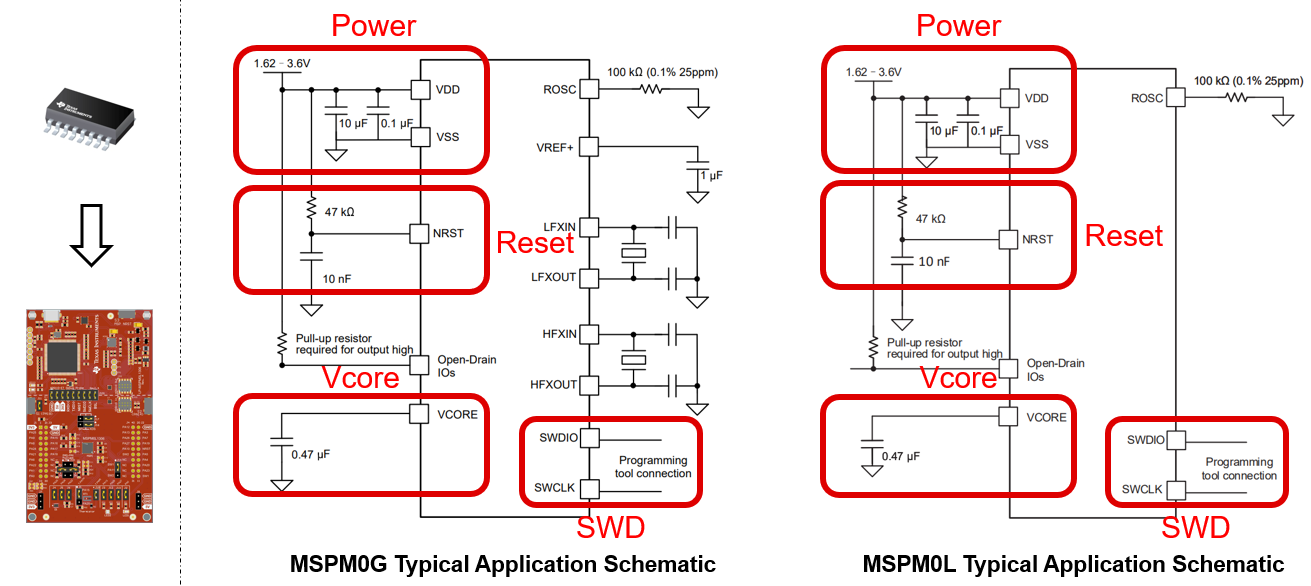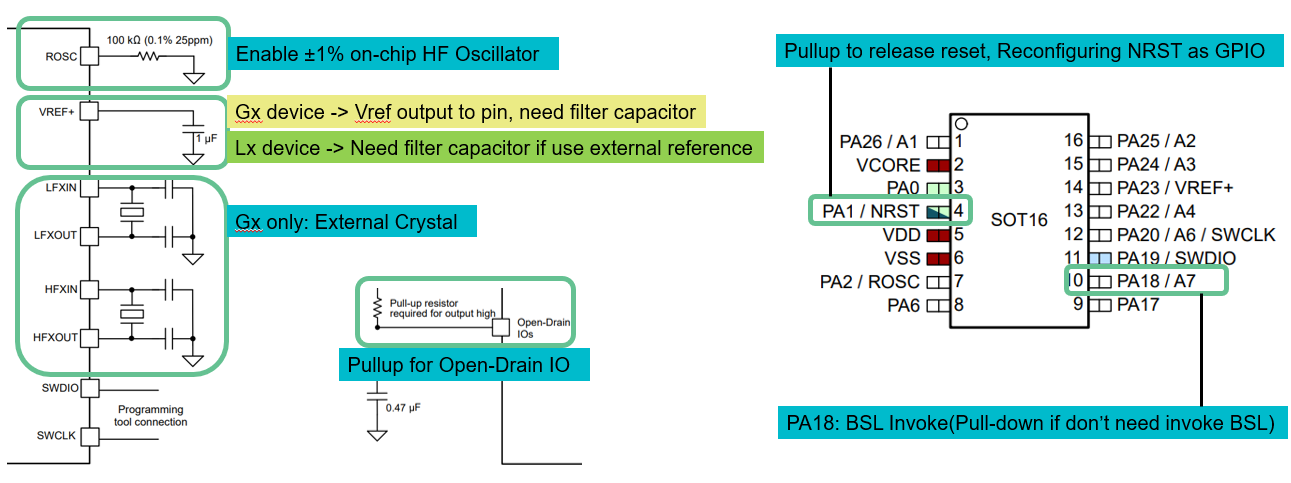SLAAEF9 November 2023 MSPM0L1306
- 1
- Abstract
- Trademarks
- 1MSPM0 Portfolio Overview
-
2Ecosystem And Migration
- 2.1 Ecosystem Comparison
- 2.2 Migration Process
- 2.3 Example
- 3Core Architecture Comparison
- 4Digital Peripheral Comparison
- 5Analog Peripheral Comparison
2.2.5 Step 5. PCB Board Design
- To get the design package, go through the Ti.com and enter the specific device page. Take MSPM0L1304, for example.
- Click Design and development -->
CAD/CAE symbols, select different package models to download according to your needs.
 Figure 2-39 Ultra Librarian Tool
Entrance
Figure 2-39 Ultra Librarian Tool
Entrance - As for MSPM0 hardware design into your
own board. Figure 2-40 shows a sample minimal system design.
 Figure 2-40 MSPM0 Minimum System
Figure 2-40 MSPM0 Minimum SystemFor minimal systems, the following points need to be noted:
 Figure 2-41 MSPM0 Minimum System
Attention
Figure 2-41 MSPM0 Minimum System
AttentionFor more detailed information about hardware development, see the following: